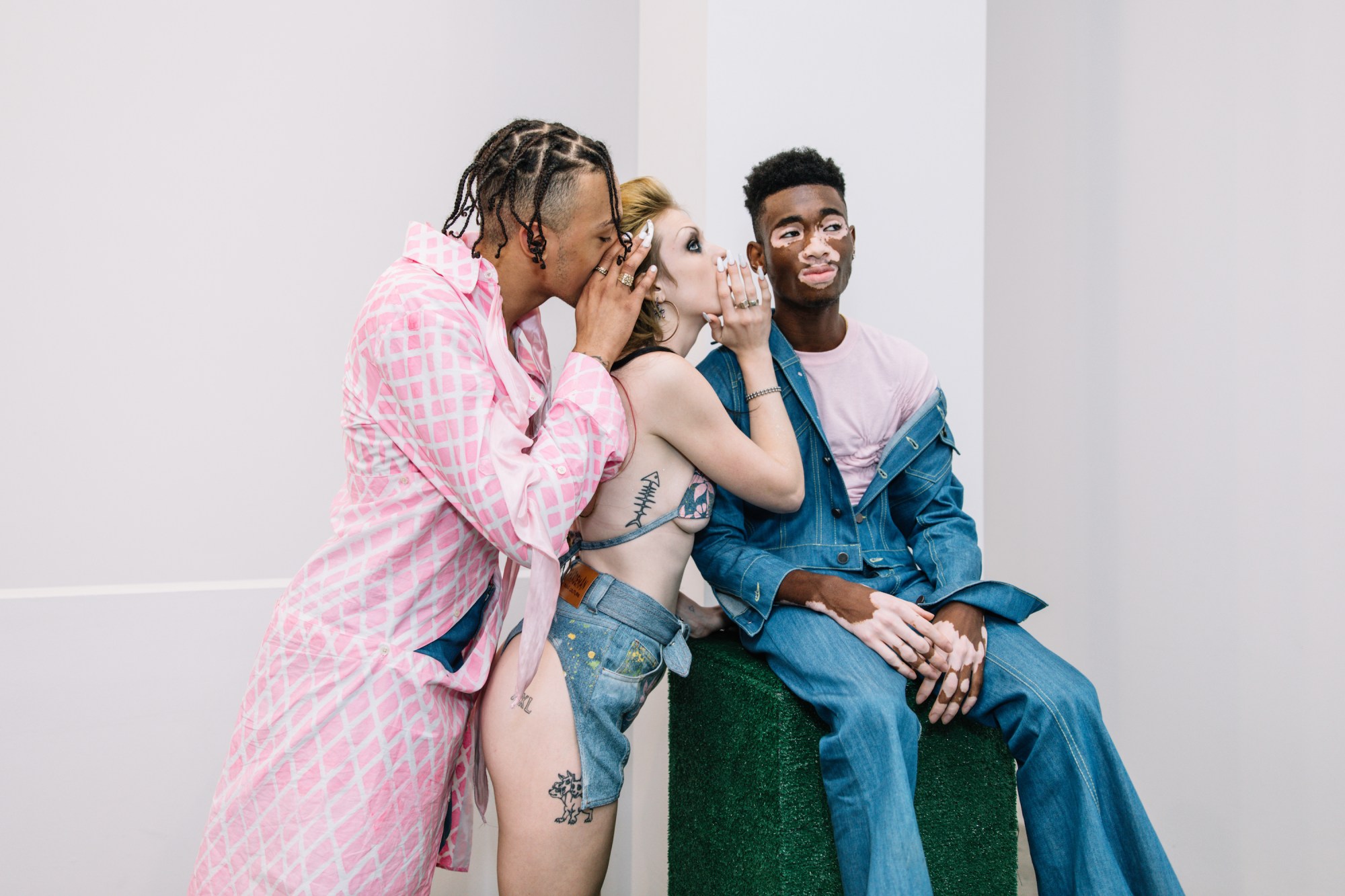“Happy, hardcore, and free” — these are the words 27-year-old Sophie Hardeman uses to describe her brand. Launched in 2016, the Amsterdam-based label uses denim to explore social boundaries and push the limits of gender, sexuality, and conformity through deconstructed pieces that are, well, happy, hardcore, and free.
“With Hardeman, it’s always this sort of investigation of what’s normal, and how I can change that,” the designer said after her NYFW presentation earlier this week. “It’s about redefining social constructions and freeing people from what they think they should look like.”
For her latest collection, which she presented this weekend at Crossing Art Gallery in Chelsea, Hardeman was inspired by the “total freedom of Spring Break.” Walking into the gallery space, guests were greeted with special Hardeman condoms. The designer mimicked the spontaneous, and often chaotic, nature of Spring Break by having her models just walk around the room as if they were at a party. But this wasn’t just because she wanted them to “let loose, get drunk, and go over the edge.” It’s because Hardeman isn’t about changing her models, or her customers, for that matter. She wants to embrace them as they already are, instead.
“I hope that with Hardeman we can make clothes that respect and add to a person’s identity — not redefine it based on some idea of what’s normal,” she said. Below, the designer talks to i-D about the complexities of denim and the importance of being yourself.
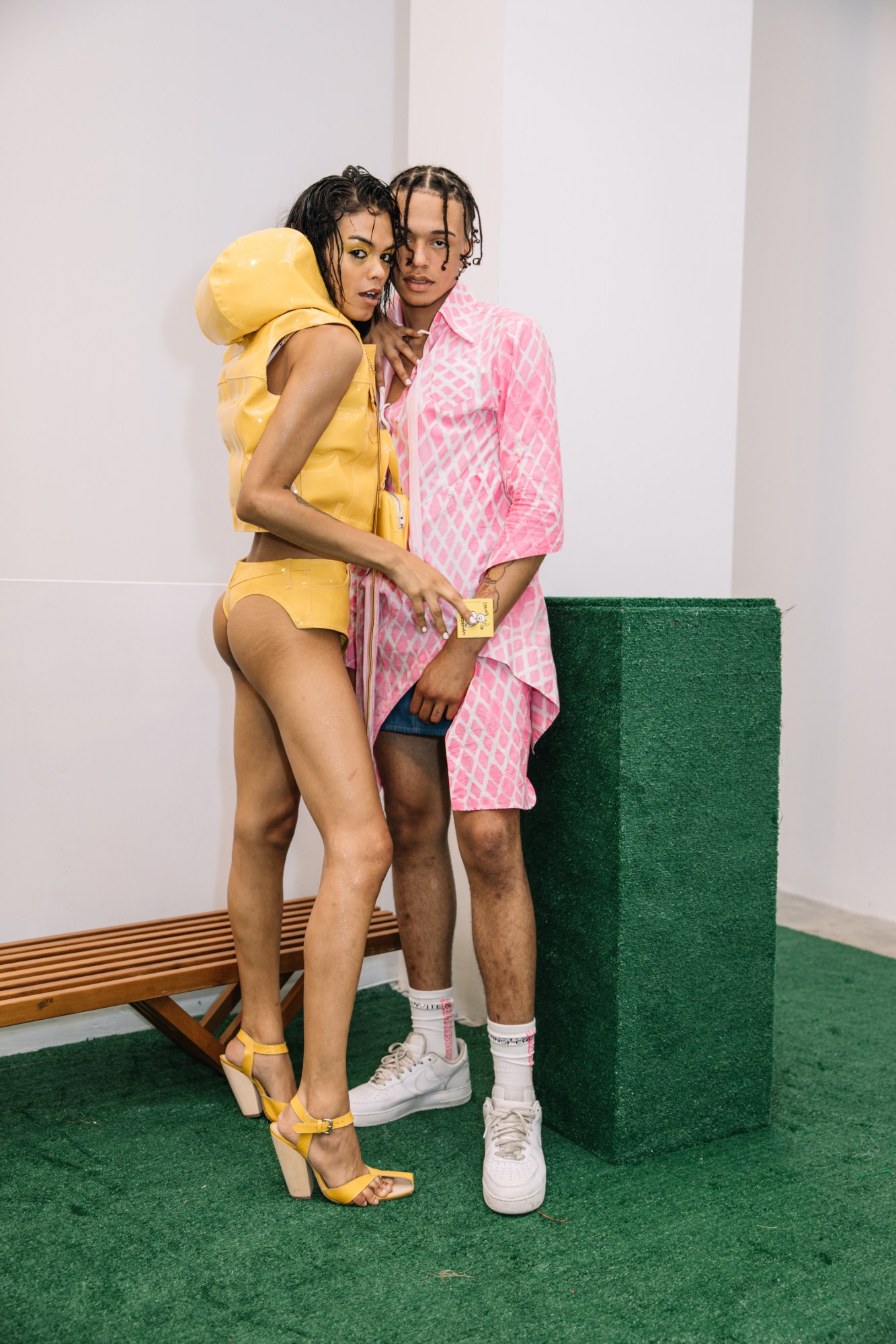
Tell me about the new collection. It was called “Spring Flung.” What was it about Spring Break that inspired you?
I’m not American — I’m from Amsterdam — so I’d never even really heard of Spring Break. The more I started to learn about it, the more I really hated it, but it’s also fascinating to me. But the part that really speaks to me is that it’s usually people’s very first trip by themselves, or with their friends. So, it’s almost like a teenager’s first step to independence — to becoming yourself. I think that idea correlates with my brand philosophy — it’s about redefining yourself and finding out what that really means, instead of what it should look like. But Spring Break is also just total freedom, and letting loose, getting drunk, and going over the edge.
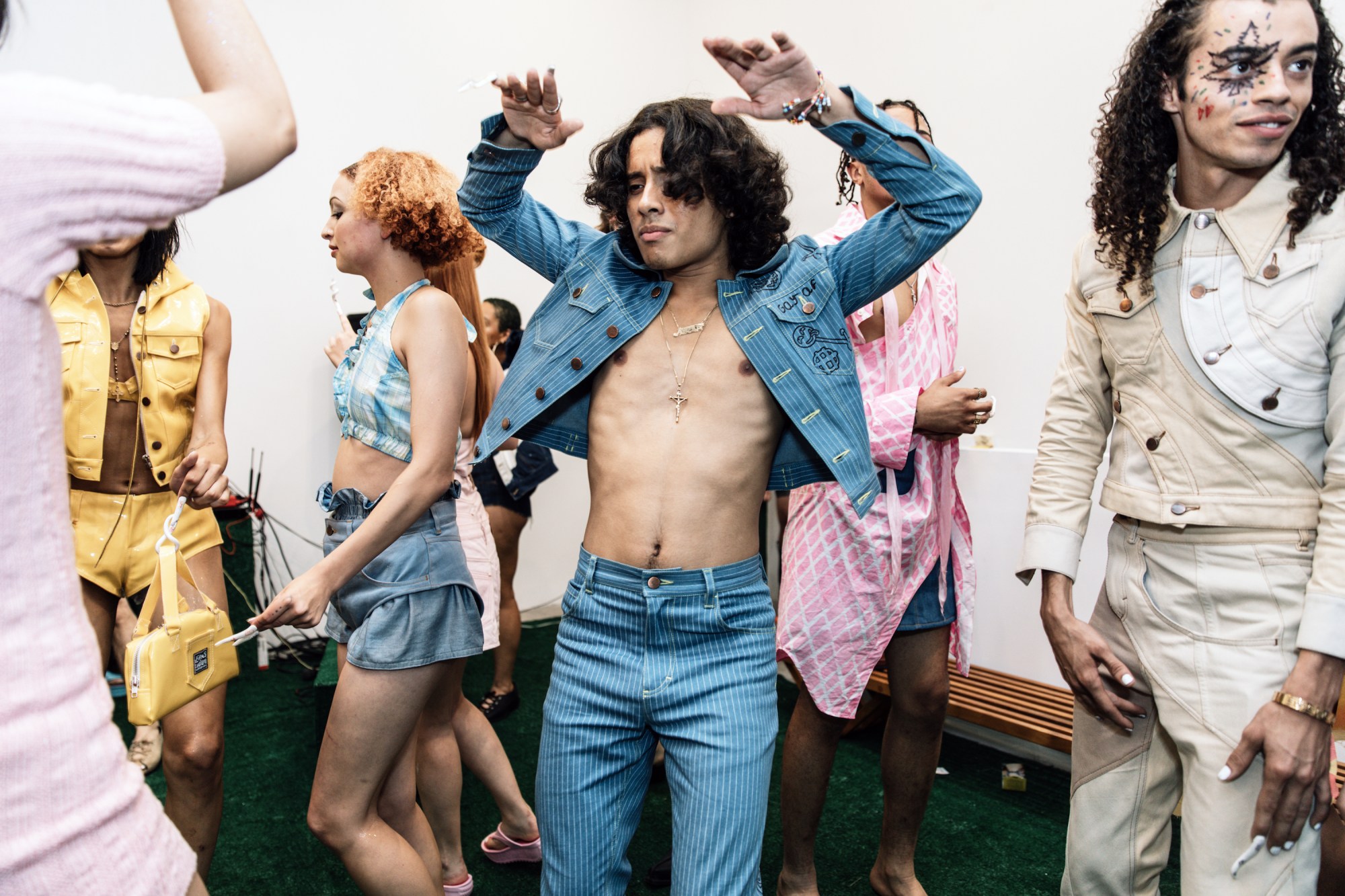
How does this season compare to previous collections?
Aside from being very colorful, I think it’s a lot more playful than ever. It’s also really cheeky.
When did you start Hardeman?
I started the brand right after I graduated from Gerrit Rietvald Academy, which is an art school where we learned a lot about conceptual art. For me, I’m very concept driven — things always have to have some sort of reason. Then we were invited by VFILES to show the collection in 2016. That was the real catalyst. But it’s really been crazy since then. I mean, I’m skilled in certain ways, but I was definitely naïve about how fashion actually works, and industry, and things like that. So, we’ve really just had to figure it out as we went because I’m never not going to do things how I want.

You’ve chosen to ignore pretty much all of the rules when it comes to what a presentation or runway show should be.
Yeah, that’s been incredibly important to me. When you do a runway presentation, the show takes literally five seconds, and most people don’t even get to see the clothes. So, with our presentations, we really give a lot more meaning to the idea behind it, and to the people that are wearing the designs. Instead of just being clothes you can wear on the runway, you can actually imagine people hanging out in Hardeman. It makes it so much more real for me — I need to see people actually wearing, and living, in my designs.
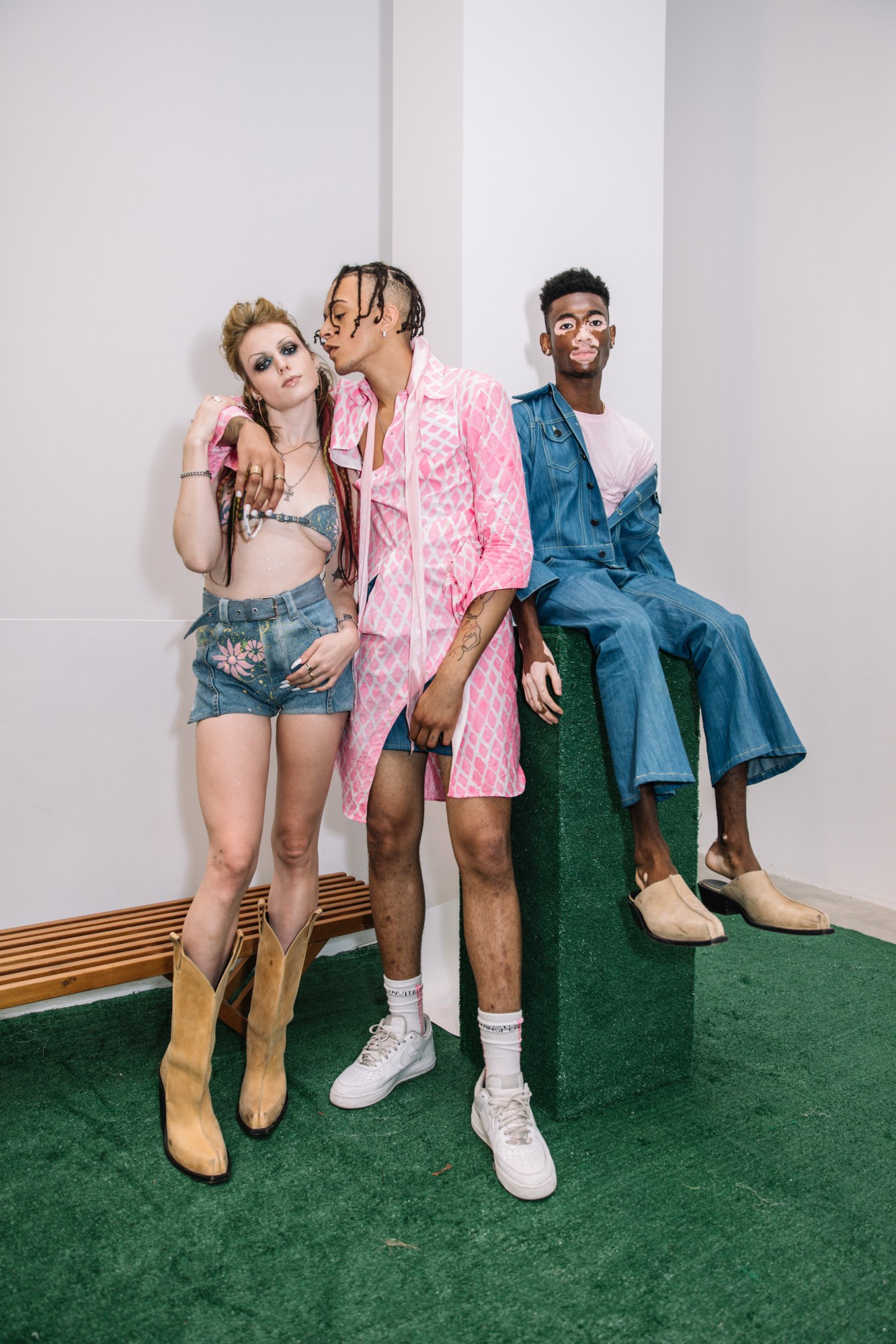
Why did you start working with denim?
Denim translates to so many people. You can tell anyone, even if they don’t understand art or don’t care about some abstract fashion idea, ‘Here’s some jeans,’ and they’ll immediately get it. And everyone wears denim. So, you can say that you’re not affected by fashion, or the fashion industry, but every morning, [people] around the world put on their jeans. I mean, my dad wears them to work. Everyone has them.
So you’re drawn to the commonality of it?
Yeah, and because it’s a language that almost everyone can relate to, unlike collared shirts or wife-beaters — I just learned they were called that. But jeans — they’re something we all have in our wardrobe. And from a design standpoint, what I love about denim is how graphic it can be. The stitching has so many different lines that as soon as you move things around, or extend a leg, it becomes something totally different. So, it’s very visual.
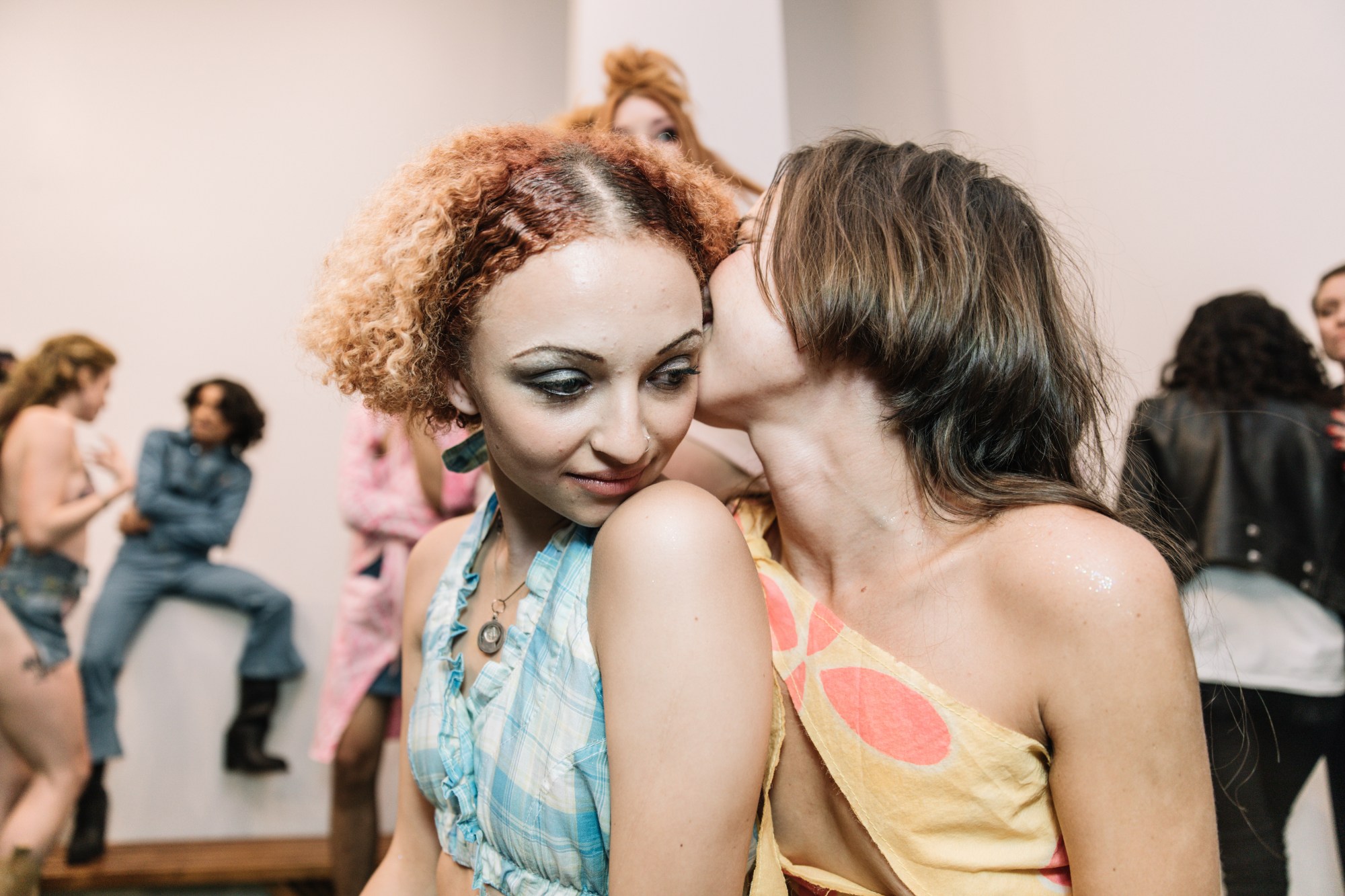
You’ve also focused on making sure your pieces are gender fluid. Has that been really important to you?
Honestly, I’ve just never really understood the difference between men’s and women’s clothes. Of course, we have different body shapes, but it’s definitely something I take into consideration, and take very seriously. The fashion industry is obviously a really toxic system that makes people feel insecure and like you have to buy a certain product, or dress a certain way, to look and feel good.
You’ve mentioned that a few times — the norm, or defining what’s normal. What’s your fascination with that idea, and combating it?
I was born and raised in the Netherlands, in and around Amsterdam. But when I was seven we moved to Augusta, Georgia. That’s really when I learned that what I thought was normal, was not necessarily what other people thought was normal. There are so many different ideas as to what that really means. When I was living there, I had to wear a school uniform, and because of the way I was raised, or how I dressed or whatever, people looked at me as weird, or not normal, at least. Then, my family moved back to Amsterdam and it was like, suddenly everything was what I thought was normal again. Having moved around like that, I realized that people only think certain things are normal because of how they’re raised, or because they haven’t been anywhere else. So, no matter where I lived — in Augusta or Amsterdam — I never really fit in. But that didn’t make me sad — it made me feel free.

So, who do you see as the Hardeman wearer? Someone that doesn’t want to fit in?
Yeah. You can be happy without fitting in. I mean, even the fact that my grandma used to ask if I had a boyfriend yet — these are all the things we’ve been told we’re supposed to do, and supposed to want. We’re even told how to behave. And for a lot of people, those structures are good, because they’re comfortable. It’s like, if you achieve all of those things, you’re successful. But I want people to realize they can be happy either way — that they can do whatever they want.
